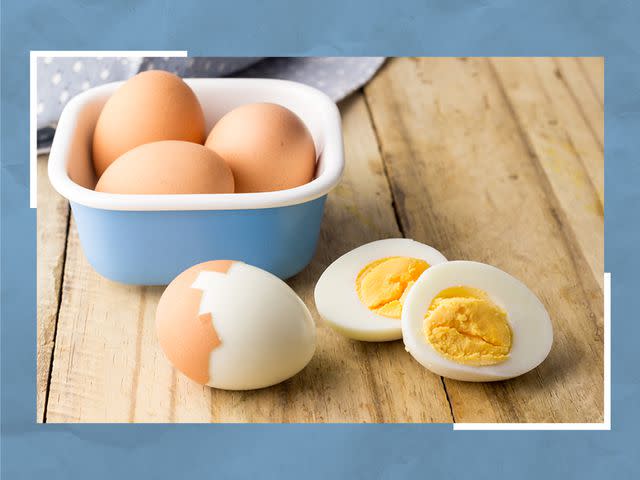The Internet's New Favorite Way to Hard-Cook Eggs Might Also Be the Most Dangerous
Read this before you try it at home.
There seem to be endless methods for hard-boiling eggs that promise easy-to-peel shells that effortlessly slip right off the eggs. For any home cook who regularly makes egg salad, deviled eggs, or likes to keep hard-boiled eggs in the fridge to have on hand for cobb salads, an easy-to-peel egg elicits much joy. Most of us know the frustration of peeling eggs when the shells splinter into sharp pieces that get under our fingernails or stubbornly cling to the egg, leaving unappetizing pock marks behind.
What is the foolproof way to ensure eggshells easily slide off an egg? Is it adding vinegar to boiling water before submerging the eggs? Is it using a pressure cooker? Sous vide? Steaming in an inch of water? What about baking eggs in their shells in muffin tins, sheet pans, or directly on the oven rack?
Can the answer to each of these be yes? These techniques have worked for someone, and that person wanted to pass on their win to others. So when @kalejunkie's recent Instagram post showed her placing the eggs on something else altogether, her commenters were divided, some even fearful.
How to Make Hard-Cooked Eggs in the Oven Using a Wet Towel
Cookbook author Nicole Keshishian Modic, the voice behind @kalejunkie, posted a video with a method she attributes to Alton Brown, although we can’t find an instance online where he recommends it. In the video, she takes a dish towel, lightly wets it, wrings it out, and lays it on her oven rack. She then places eggs directly on the dish towel and bakes them at 320 degrees F (165 degrees C) for 30 minutes.
According to Modic's caption, “The moist towel stops the eggs from coming into direct contact with the metal so there is no discoloration. When the eggs are done, the towel is cool, so you can wrap them all and pick them up. From there, it’s a simple ice bath for 10 minutes and the shells literally slice off. The result? The CREAMIEST—not dry—hard baked eggs."
Some commenters were eager to give the method a try, but others were concerned about its safety. “Okay, but were you scared you might accidentally set your entire house on fire and ruin everything? Na? Just me?” asked one of her followers. To which Modic answered, “No hahaha,” without further explanation.
It wasn’t only that one commenter who was concerned about the safety of putting a towel—a damp one at that—in a hot oven. Many people chimed in, including someone who said, “I’m scared my house will catch fire.”
Another commenter clarified, “It would have to be a natural fiber towel only. I would think that anything synthetic would melt.” Modic replied with “Correct - so no paper towels,” but that information is nowhere in her video or her caption.
Is It Safe to Put a Damp Towel in a Hot Oven?

Getty Images/Allrecipes
While adding towels and water to a baking dish to create steam is a proven approach for baking bread, we can't find any sources touting the safety of a damp kitchen towel placed directly on the oven rack. And since there are so many variables that could affect how the towel behaves in a hot oven—the material the towel is made from, the age of the oven, whether it's gas or electric, the size of the stove—we wholeheartedly recommend being extra cautious with this method: don't walk far away from your oven and keep your fire extinguisher at hand.
When Allrecipes culinary producer Nicole McLaughlin tried this hack, she followed both precautions. Her oven did not catch fire, but if the goal of making hard-boiled eggs in the oven was to have easy-to-peel shells, it missed the mark.
"I think it makes the peeling a little more difficult," she commented as she removed the eggshells. She noted that the eggs were perfectly hard-boiled and didn't have any gray between the yolk and the white, concluding that she would only do this if she needed to make "a bunch of hard-boiled eggs at one time."
If you're suspicious of using a wet towel in a hot oven but want to try baking to get perfectly hard-cooked eggs, try putting them in a muffin tin or air fryer—it's safer and takes half the time.
Read the original article on All Recipes.

 Yahoo Lifestyle
Yahoo Lifestyle 
